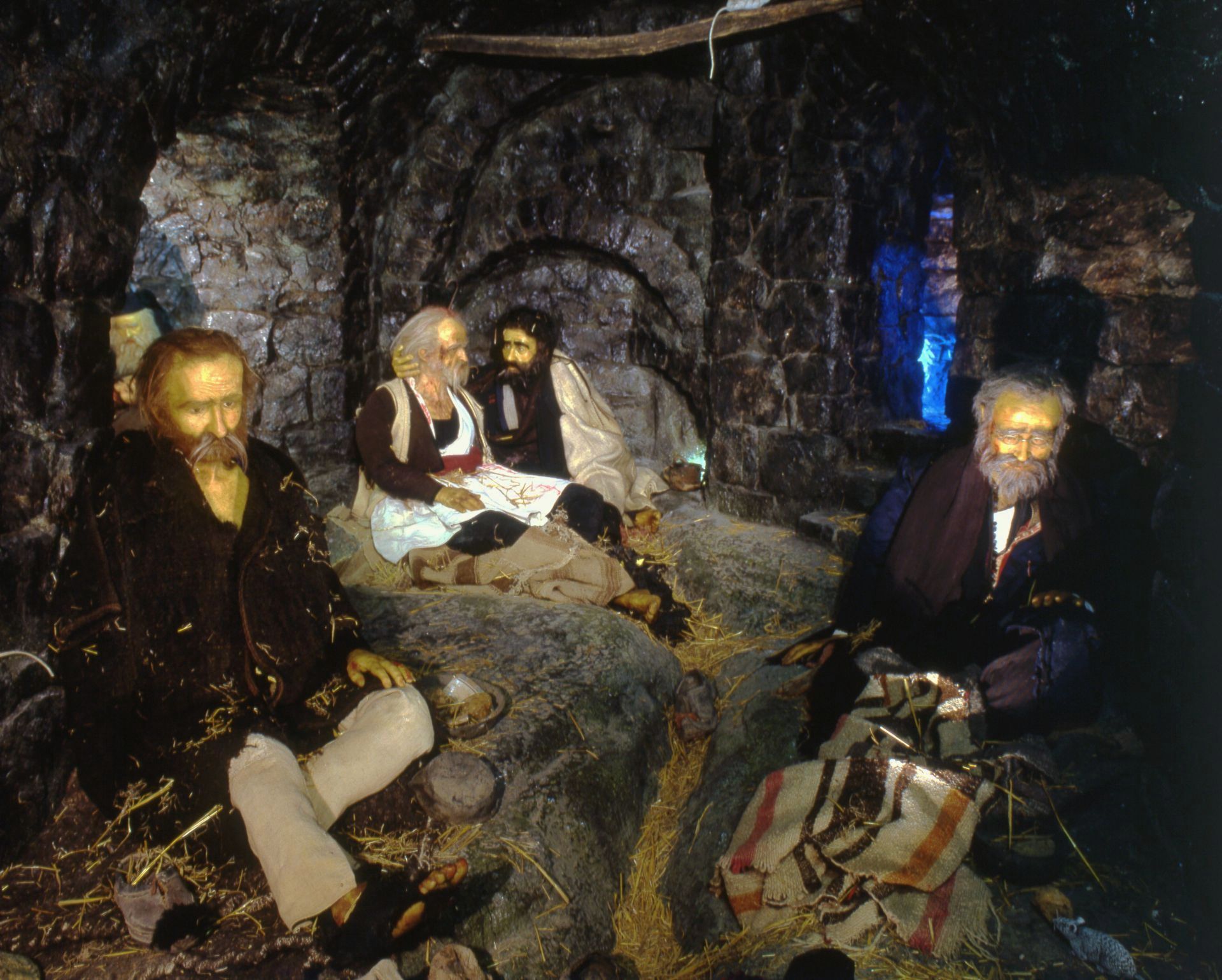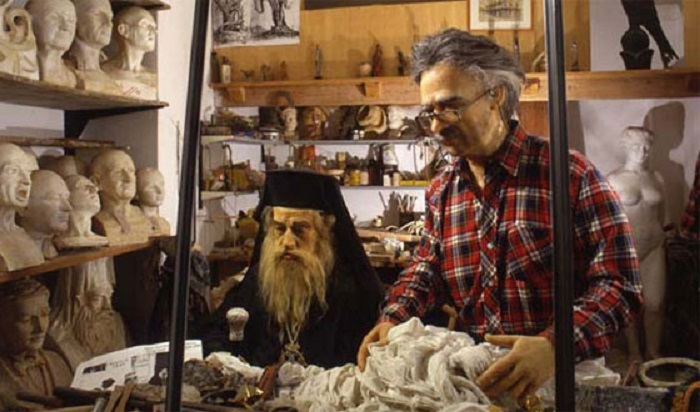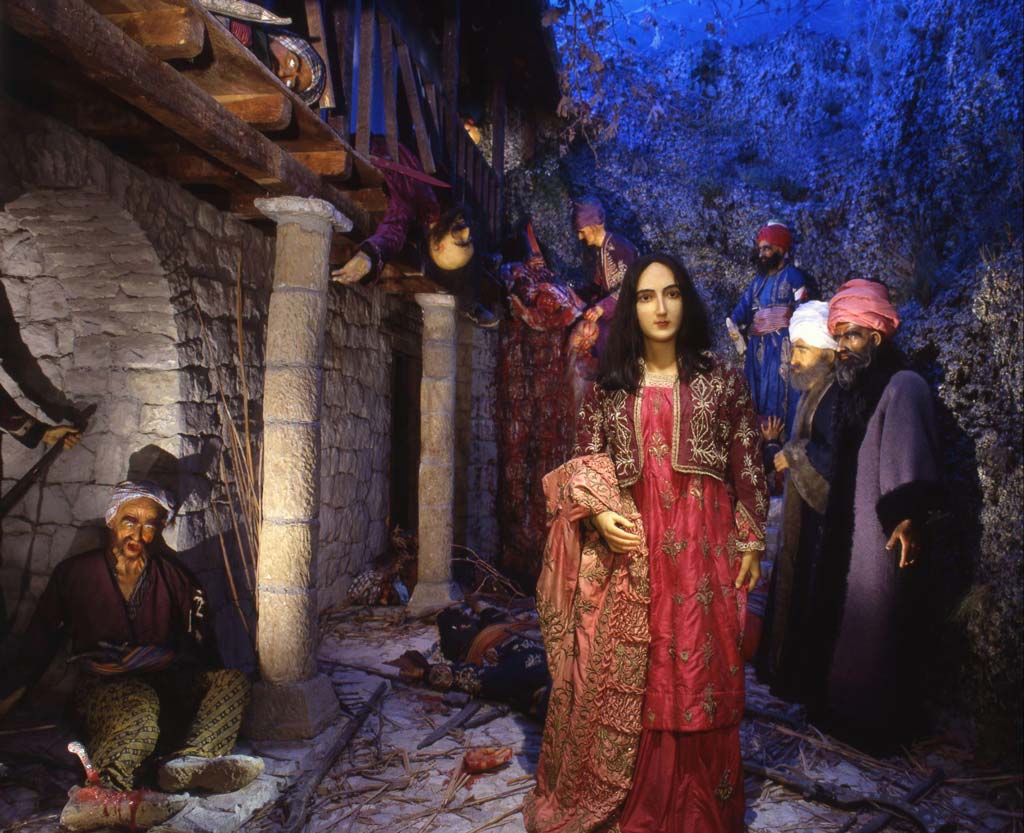
Perched on a tall, rocky hill, just a few kilometers outside Ioannina, the museum is housed inside a traditional 18th century Epirus-style building which was constructed around a labyrinthine cave.
Inside the cave there are many alcoves which house scenes from modern Greek history. The vast majority of the historical events displayed are from the 1821 War of Independence. In fact, when the museum first opened its doors in 1995, most of its displays were dedicated to that turbulent era.
In the following years, other themes were added, such as the 1974 Cyprus invasion tragedy, the 1940-1941 Greco-Italian War, Ancient Greece and several others.

The majority of the materials from which the wax models are made made are natural. Amazingly, most of their dresses, shoes and uniforms are authentic. Even most of the mannequins’ hair used is natural, and many of the weapons are real as well. The rest is made of wax, clay and different kinds of plastics.
But the craftmanship is such that even the artificial materials used look as natural as the real thing.
The props next to the lifelike wax figures are real antiques. Most of the pots, pans, pens, buckshot, pistols, rifles, knives, books and other objects are original — and all painstakingly collected by Vrellis himself.

Then the tour takes you through Filiki Eteria, the Armatoloi kai Kleftes, the Slaughter of Ali-Pasha, then to the brave women of Pindus.
Later scenes depict the Greco-Italian War, the Battle of Crete and even the “Lady of Ro,” with several more thrilling stops in between.
Building the museum
Vrellis, a graduate of the Sculpture Department of Athens’ School of Fine Arts, was already in his 60s and a retired professor in 1983 when he bought a barren 17-acre lot in Bizani, Ioannina, with the retirement bonus he had received from the Greek state.
He would spend the next 13 years working tirelessly, shaping both the exterior and interior of his museum, designing and building it from scratch to resemble an authentic 18th-century building. He worked not only as a sculptor, but also as an architect, painter, costume designer, and folklore artist as well, since he did everything himself.
The compilation of historical and folkloric material on the subjects depicted by Vrellis’ wax models was a laborious work which took more than three decades of careful study.
The love he had for the pre-revolution era and the 1821 War of Independence materialized in the museum in the most striking ways. His heroes were the courageous men and women of the 1821 Revolution and their sacrifice: “They were slaughtered, hanged, torn apart, humiliated — so that we can live free today, without the shackles of slavery,” he wrote in his 1995 memoir , published upon the opening of the museum.

Perhaps this Greek Renaissance man was destined to create this inspiring museum. He was born on March 25, 1923, the very date the Greeks declared war against their Ottoman overlords.
Vrellis’ life
This gifted Greek Museum creator was born on March 25, 1923, in Ioannina. He did not have an easy life. He lost his mother at the age of four and his father at 13. He was raised by his mother’s sister, a teacher who sparked his love of learning by teaching him history and the arts and letters.
Vrellis also showed that he was an artist from an early age. He could paint and sculpt during his teenage years, carving and drawing his heroes. Yet the Nazis put a temporary stop to his artistic endeavors, sending him and other teenagers from Ioannina to clear building remains of the remnants of unexploded bombs.

Vrellis graduated in 1954, after a break to serve in the Army. He then traveled to Florence to study bronze sculpture and Ravenna shortly afterward, to learn the art of mosaics.
He eventually returned to Greece to work on conservation works on Athens’ Acropolis Hill and spent another three years at the Athens Archaeological Museum, where he established the Department of Reproduction of Classical Antiquities.
In 1962 he married his long-time love, Maria Giannissis, eventually returning to Ioannina. However, life in the Greek province in the 1960s was not easy. He took some orders for busts of heroes, but that was the entirety of his artistic production at that time.
Vrellis worked as a teacher in Ioannina, preparing candidates for the School of Fine Arts while teaching drawing and helping his wife rear their two children.
Soon the polymath was hired at the University of Ioannina, where he taught the history of art for seven years.
It was only then that he started creating wax figures, which he did as part of his teaching duties at school. In 1975, he began his creation of the figures in the Krifo Scholio.

So far, millions of people have visited the impressive and educational museum, thanks to Vrellis’ labor of love.
But unfortunately, the Greek state never officially recognized this brilliant man’s accomplishments. The great sculptor and patriot passed away on July 23, 2010, leaving behind a veritable national landmark and a priceless recreation of Greek history.
See all the latest news from Greece and the world at Greekreporter.com. Contact our newsroom to report an update or send your story, photos and videos. Follow GR on Google News and subscribe here to our daily email!




